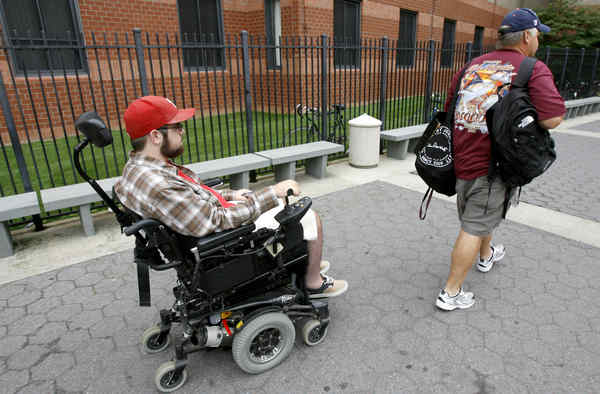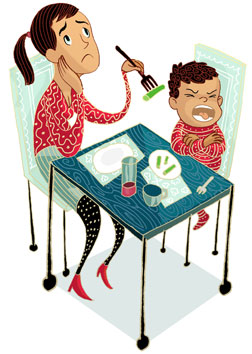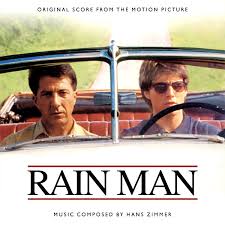
Friday, December 11, 2009
Women on the Autism Spectrum

Monday, November 30, 2009
3 Mini Meditations to Help You Through Your Day (or Night) By Ed and Deb Shapiro

From Be the Change: How Meditation Can Transform You and the World
What stops you from sleeping through the night? Is it when things are not going your way or they look topsy-turvy and you just want to scream; when your life appears chaotic and you are not sure if you are coming or going; or when it feels like everything is piled on your shoulders?
Life should be an exciting and outrageous adventure. Isn't it a wonder how a spider weaves a web or a bee makes a hive? Did you ever notice the small, everyday miracles, like the fact that you can breathe in and out? But how many of us get to experience this miracle? Sometimes life just feels too awful. We want to feel good, we want to be happy, in fact happiness is our birthright. But so often there are just too many difficulties to deal with. And although we may know that meditation chills us out, if we are feeling stressed or irritable then it just doesn't seem so appealing.
So here are three mini-meditations, moments to just stop and breathe and remember why you are here. A moment to check yourself out, to look within, and to find what is really meaningful to you. You can get it together even when you think it is all falling apart.
Mini-meditations can be done on a train, walking down the street, at an airport, standing at a bus stop, in an elevator, while sitting in the bathroom (often the only place you can be alone!). Silently count your out-breath up to ten times, or walk with awareness of each step for up to ten steps. Or relax each part of your body, then silently repeat "soft belly" for five breaths.
If you are at work, then use your lunch hour to find a quiet spot, perhaps in a park, or even in the office if everyone else has gone out. If you are traveling then use that time to consciously breathe, letting your awareness follow your breath from your nose tip to your belly and back out again. If you are driving or operating machinery and feel you are getting tense, then stop for a moment, breathe into your belly and silently repeat "soft belly, soft belly." Focus on any part of the body that is feeling tight and breathe into it, until you relax and let go. Silently repeat "soft shoulders" or "soft neck" and so on.
As you walk down the street or ride in an elevator, practice a mini-loving kindness by silently wishing everyone be well, wishing that everyone be happy. In the office you can spend a few moments repeating the names of everyone you work with and wishing them happiness. On your way home from work reflect on your day and generate loving thoughts to all those you met. When you send out relaxing and loving thoughts it relaxes the space around you and often any chaotic or disturbing energies will dissipate. What you put out comes back to you ten fold
1. Mini Breath Meditation
Sit comfortably with your back straight. Take a deep breath and let it go. Begin to silently count at the end of each out breath: Inhale . . . exhale . . . count one, inhale . . . exhale . . . two, inhale . . . exhale . . . three. Then start at one again. Just three breaths and back to one. Simply following each breath in and silently counting. So simple. Do this as many times as you want, eyes open or closed, breathing normally.
2. Mini Walking Meditation
You can do this walking along a country lane, a city street, in the office or the garden. You can walk slowly, normal or fast, whatever feels right. As you walk become aware of your walking, of the movement of your body and the rise and fall of your feet. Become aware of your breath and see if you can bring both your breathing and your walking together. Just walk and breathe with awareness for a few minutes.
3. Instant Letting Go
Find a quiet place to sit, have a straight back, and take a deep breath and let it go. Then quietly repeat to yourself: "My body is at ease and relaxed . . . my heartbeat is normal . . . my mind is calm and peaceful . . . my heart is open and loving." Keep repeating this until you have let go of the tension and are at peace. Then take a deep breath and have a smile on your face!
©2009 Ed and Deb Shapiro, author of Be the Change: How Meditation Can Transform You and the World
Author Bio
Ed and Deb Shapiro, authors of Be the Change: How Meditation Can Transform You and the World, are the award-winning authors of fifteen books on meditation, personal development, and social action. They are featured bloggers for the HuffingtonPost.com and for Care2.com, teach meditation workshops worldwide, work as corporate coaches and consultants, and are the creators and writers of the daily Chill Our inspirational text messages on Sprint cell phones. The Shapiros have taught meditation and personal development for more than twenty-five years. They currently reside in Boulder, Colorado.
For more information please visit www.EdandDebShapiro.com.
Friday, November 20, 2009
Superheroes and the Spectrum

Monday, November 16, 2009
Just Breathe (by Robert Naseef, Ph.D.)

I am frequently requested to talk to parent groups about coping with stress. Life with a child with special needs presents constant pressure and stress to mind and body. Inevitably, you get wrapped up doing all you can for your child. There is little time and energy for personal, marital, and family activities.
Obviously parents need to refresh and recharge. But how does a parent get a break? Mothers especially feel overwhelmed and even guilty that they are not doing enough. If you do convince yourself that you deserve a break, there may be resistance. Who else can take care of your child?
As Dr. Cindy Ariel has written, “Make no doubt about it--the absolute ideal person to spend time with your child is you. You are the best, most competent, most loving person available to care for your child. But this is no reason to never take a break.” As my life-partner, she has inspired much of my personal and professional growth and in this example helped me to understand the passions of mothers.
Recently I was speaking to parents at the Children’s
He shared that he viewed this like the safety precautions we get at the beginning of an airline flight. If the cabin loses pressure during flight, you must put on an oxygen mask or risk losing consciousness. That is why airlines tell you to put on your own mask before helping someone else, such as your child, with their mask--if you can’t breathe and pass out, you won’t not be able to help anybody.
Upon hearing this, everyone in the room breathed a sigh of relief. This thoughtful father of a medically fragile child had given everyone in the room permission to take a break.
Monday, November 2, 2009
Pets as Therapists? Animals & Human Emotions (by Kate Altman, M.S.)

Monday, October 19, 2009
"Invisible" Autism (by Kate Altman)
Recently, a mother of a son with autism said to me that one of the hardest things about her son having autism, is that he “looks so normal” that no one understands why he might be acting differently than other children. She feels that other parents judge her when her 9-year-old son has a temper tantrum or think he is rude when he does not make eye contact when they speak to him. She suggested that children with more visibly apparent disabilities, like physical disabilities or Down syndrome, receive more understanding, empathy and support.
Roy Richard Grinker, an anthropologist, discussed the same phenomenon in his book, Unstrange Minds: Remapping the World of Autism:

“….people throughout the world tend to pass moral judgments on illnesses that have few obvious physical signs, illnesses with symptoms and causes that are confusing to people or that may be incurable….The philosopher Ian Hacking, who recently gave a series of lectures on autism at the College de France in Paris, wondered aloud which was worse: the child who never speaks and has no social life, or the child who seems almost normal? He didn’t think there was any real answer to the question but posed it as a philosophical exercise. At least the profoundly impaired person clearly has a disability (Grinker, pp. 69-70).”
What do you think? Are people with autism spectrum disorders especially stigmatized due to the “invisibility” of their diagnoses? Has the prevalence of autism in the media impacted that “invisibility”, and if so, has it made society more accepting and supportive?
Thursday, October 1, 2009
Supporting Adults on the Autism Spectrum
I recently had the privilege of visiting The Coffeehouse Center of Bucks of Bucks County, a community support program for young adults with Aspergers and PDD-NOS as they transition to adulthood. As you will see in the video below, this wonderful program helps the young adults connect with and support one another in order to build social skills, self-esteem, and just have fun. Hopefully more programs like this one will develop around the country as children on the autism spectrum grow up and head off to college or out into “the real world.”
To learn more about the Coffeehouse, click here:
http://www.coffeehousecenter.com/
Sunday, September 27, 2009
Fatherly Devotion in the News

The Effects of Animals on Autism?
Saturday, September 26, 2009
Checklists for Teachers to Get, Focus, and Maintain a Child's Attention

Although these lists are intended to help school teachers work with children diagnosed with ADHD, I think they can be helpful for any "teacher" and child.
Checklists for Teachers
By: Sandra F. Rief (1997)
Getting students' attention
- Ask an interesting, speculative question, show a picture, tell a little story, or read a related poem to generate discussion and interest in the upcoming lesson.
- Try "'playfulness," silliness, a bit of theatrics (props and storytelling) to get attention and peak interest.
- Use storytelling. Students of all ages love to hear stories, especially personal stories. It is very effective in getting attention.
- Add a bit of mystery. Bring in an object relevant to the upcoming lesson in a box, bag, or pillowcase. This is a wonderful way to generate predictions and can lead to excellent discussions or writing activities.
- Signal students auditorily: ring a bell, use a beeper or timer, play a bar of music on the piano or guitar, etc.
- Vary your tone of voice: loud, soft, whispering. Try making a louder command "Listen! Freeze! Ready!" followed by a few seconds of silence before proceeding in a normal voice to give directions.
- Use visual signals: flash the lights or raise your hand which signals the students to raise their hands and close their mouths until everyone is silent.
- Frame the visual material you want students to be focused on with your hands or with a colored box around it.
- If using an overhead, place an object (e.g., little toy car or plastic figure) to be projected on the screen to get attention.
- Clearly signal: "Everybody…Ready…"
- Color is very effective in getting attention. Make use of colored dry-erase pens on white boards, colored overhead pens for transparencies and overhead projectors, and colored paper to highlight key words, phrases, steps to computation problems, spelling patterns, etc.
- Model excitement and enthusiasm about the upcoming lesson.
- Use eye contact. Students should be facing you when you are speaking, especially while instructions are being given. If students are seated in clusters, have those students not directly facing you turn their chairs and bodies around to face you when signaled to do so.
Focusing students' attention
- Employ multisensory strategies when directions are given and a lesson is presented.
- Maintain your visibility.
- Project your voice and make sure you can be heard clearly by all students.
- Be aware of competing sounds in your room environment (such as noisy heaters or air conditioning unit.)
- Call students up front and close to you for direct instruction (e.g., seated on the carpet by the board).
- Position all students so that they can see the board and/or overhead screen. Always allow students to readjust their seating and signal you if their visibility is blocked.
- Explain the purpose and relevance to hook students in to your lesson.
- Incorporate demonstrations and hands-on presentations into your teaching whenever possible.
- Use a flashlight or laser pointer. Turn off the lights and get students to focus by illuminating objects or individuals with the light.
- Use study guides/sheets that are partial outlines. While you are presenting a lesson or giving a lecture, students fill in the missing words based on what you are saying and/or writing on the board or overhead.
- Use visuals. Write key words or pictures on the board or overhead projector while presenting. Use pictures, diagrams, gestures, manipulatives, and high-interest material.
- Illustrate, illustrate, illustrate: It doesn't matter if you don't draw well to illustrate throughout your presentation. Give yourself and students permission and encouragement to draw even if you lack the skill or talent. Drawings don't have to be sophisticated or accurate. In fact, often the sillier, the better. Have fun with it. These silly illustrations get and maintain attention and help students understand and remember the material (sequence of events, key points, abstract information, etc.).
- Point with a dowel, a stick/pointer, or laser pointer to written material you want students to focus on. If you can find a pointer /dowel with a little hand/ finger on it, even better.
* Note: Overhead projectors are the best tools for focusing students' attention in the classroom. You are able to write down information in color without having to turn your back on the students, thus improving classroom management and reducing behavioral problems. On the overhead, you can model easily and frame important information. Transparencies can be made in advance, saving you time. Then it can be partially covered up, blocking out any distracting, visual stimuli.
- Block out material by covering or removing from the visual field that which you visually don't want students to focus on. Remove the distracting clutter from the board or screen.
- Have students write down brief notes or illustrate key points during instruction.
Maintaining students' attention
- Move around in the classroom to maintain your visibility.
- Teach thematically whenever possible, allowing for integration of ideas/concepts and connections to be made.
- Present at a lively, brisk pace.
- Be prepared and avoid lag time in instruction.
- Use pictures, diagrams, gestures, manipulatives, and high interest materials.
- Use higher-level questioning techniques. Ask questions that are open-ended, require reasoning, and stimulate critical thinking and discussion.
- Decrease the amount of time you are doing the talking. Make all efforts to greatly increase student responses (saying and doing something with the information being taught).
- Use direct instruction techniques and other methods of questioning that allow for high response opportunities (i.e., unison responses, partner/buddy responses).
- Structure the lesson so that it can be done in pairs or small groups for maximum student involvement and attention.
- Alter the way students are called on to avoid calling on students one at a time. Instead, have students respond by "telling their partner," writing down or drawing their response, or other alternative way.
- Make frequent use of group or unison responses when there is one correct and short answer. While presenting, stop frequently and have students repeat back a word or two.
- Use the proper structure of cooperative learning groups (i.e., assignment of roles, accountability). It is not just group work. ADHD students do not typically function well in groups without clearly defined structure and expectations.
- Allowing students to use individual chalkboards or dry-erase boards throughout the lesson is motivating to students and helps maintain attention. If used properly it is also effective in checking for students' understanding and determining who needs extra help and practice.
- Use motivating computer programs for specific skill building and practice (programs that provide for frequent feedback and self correction.
Keeping students on-task during seat work
- Check for clarity. Make sure directions are clear and understood before sending students back to their seats to work independently.
- Make sure necessary supplies are available.
- Give a manageable amount of work that the student is capable of doing independently.
- Give other "failproof " work that student can do in the meantime if he or she is stumped on an assignment and needs to wait for teacher attention or assistance.
- Study buddies or partners may be assigned for any clarification purposes during seat work, especially when you are instructing another group of students while part of the class is doing seat work.
- Have students use signals to the teacher/aide for "I need help!" Some teachers use a sign or a colored signal that students may place on their desk that alerts any adult scanning the room that the student needs assistance.
- Scan classroom frequently. All students need positive reinforcement. Give positive comments with high frequency, praising students specifically whom you observe to be on-task. This serves as a reminder to students who tend to have difficulty.
- Consider using a timer for some students who work well with a "beat the clock" system for work completion.
- Use contracts, charts, and behavior-modification systems for on-task behavior.
- Reward for the certain number of completed items that are done with accuracy.
- Provide desk examples for reference.
- Use response costs and natural consequences for off-task behavior. Students might "owe you time" at the end of the day, before school, or for part of recess time. If they are on a point system, they may be fined points if a reasonable amount of work isn't accomplished.
- Make use of study carrels or quiet office areas for seat work.
- Teach students to self-monitor their own on-task behavior. Some teachers use an auditory signal (e.g., audio tape with intermittent beeps) and students reward themselves with points if they are on-task when the beeps go off.
THE ADD/ADHD CHECKLIST, copyright 1997 Prentice Hall Direct
Wednesday, September 23, 2009
Playing Hard to Get with Your Kids?

Tuesday, September 22, 2009
Cultivating Patience
| 1. | the quality of being patient, as the bearing of provocation, annoyance, misfortune, or pain, without complaint, loss of temper, irritation, or the like. |
| 2. | an ability or willingness to suppress restlessness or annoyance when confronted with delay: to have patience with a slow learner. |
| 3. | quiet, steady perseverance; even-tempered care; diligence:to work with patience. |
Monday, September 21, 2009
The Autistic Mind: To Celebrate or Cure? (by Kate Altman)

(Note: the client described in this post gave permission; his name has been changed to protect his identity)
The other day, I was walking with a 14 year-old client, Bruce, who has Asperger’s syndrome (we take walks during sessions to get a little exercise). Mid-conversation, he suddenly stopped, pointed towards a passing car, and exclaimed, “I hate those bumper stickers!” Surprised by his outburst, I looked to where he was pointing and saw that the car featured a “cure autism” bumper sticker to the left of its license plate. I looked at Bruce quizzically, and he continued, “I’m so sick of hearing people talk about ‘curing’ and ‘fixing’ people with autism and Asperger’s. Don’t they know about neurodiversity? There is nothing wrong with us, nothing to be fixed. It makes me so angry!”
When I met Bruce a few years ago, he was a child who knew about his AS diagnosis, but never spoke of it and quickly changed the subject whenever I brought it up. When he learned that his idol, Albert Einstein, is often speculated to have had AS, Bruce’s interest was piqued and a sense of pride began to develop. Now, he boasts about his AS—he is thrilled to share cognitive features with Einstein and Bill Gates. Recently, I have noticed him making casual references to the neurodiversity movement and autism self-advocacy. Before my eyes, Bruce is blossoming into a self-aware young man who is proud of his differences and even pities us “neurotypicals” who don’t possess virtues like an intense ability to concentrate and the “black and white thinking” that helps him make sense of the world. Bruce once described his mind as being segmented into many rooms which are not connected, but in which everything is stored and accessible to him. He said it is because of these thousands of rooms that he never feels bored.
Learning about neurodiversity and viewing his AS as a neurological difference rather than a defect has helped Bruce to develop confidence, independence and the sense that he is special, even during the height of puberty and the mania that is middle school. I support neurodiversity, especially when I look at what the movement has done for Bruce. However, I can also appreciate that supporting a cure for autism is much more important to many parents than celebrating neurodiversity. After all, Bruce can speak for himself; he is also a straight-A student in his honors classes, performs in school plays and has friendships. Parents of kids with autism who don’t have language, avoid being touched, and will never live independently, face a much different and more desperate-feeling situation.
Some parents of children with autism oppose the neurodiversity movement, just as Bruce and other neurodiversity advocates oppose the “cure autism” movement. I would argue that there is room for both. We can support researchers as they look for better therapies to help individuals with autism live comfortably in this neurotypical world, while celebrating the beautiful minds that autism creates.
Thursday, September 10, 2009
Birth Order and Personality: The NY Times Investigates (by Kate Altman)

Ellen: An American Idol

Back to School Reading List
Are you interested in learning more about a specific mental health disorder, but are turned off by the idea of reading a dry textbook in your spare time? Reading autobiographies or even well-researched fictional accounts of an individual’s experience with a mental health disorder can be a relatable and interesting way to learn more about that disorder. Take yourself back to school this September by diving into our recommended reading list below:
A Personal Matter by Kenzaburo Oe (a novel about a father’s experience with a physically disabled son)
Alone Together: Making an Asperger Marriage Work by Karin Bentley
An Unquiet Mind: A Memoir of Moods and Madness by Kay Redfield Jamison
Beyond the Wall: Personal Experiences with Autism and Asperger Syndrome by Stephen Shore
Darkness Visible: A Memoir of Madness by William Styron (about his experience with severe depression)
Dry: A Memoir by Augusten Burroughs (about his battle with alcoholism)
Freaks, Geeks & Asperger Syndrome: A User Guide to Adolescence by Luke Jackson (Jackson is a 13 year-old with AS who also has a brother with autism and a brother with AD/HD)
Get Me Out of Here: My Recovery From Borderline Personality Disorder
Just Checking: Scenes from the Life of an Obsessive-Compulsive by Emily Colas
Look Me In the Eye: My Life with Asperger’s by John Elder Robinson
Nobody Nowhere: The Extraordinary Autobiography of an Autistic by Donna Williams
Pretending to be Normal: Living with Asperger’s Syndrome by Liane Holliday Willey
Thinking in Pictures: My Life with Autism by Temple Grandin
Welcome to My Country: A Therapist’s Memoir of Madness by Lauren Slater (a memoir about a therapist’s work with mental and emotional illness)
Friday, September 4, 2009
Bullying: A Big Problem for Kids with Special Needs or Just Small Potatoes? (by Kate Altman)
Check out this article on bullying and schools: http://www.coultervideo.com/gethejumponbullyingessay.htm
What do you think? Is bullying of kids with special needs still a big problem in schools? Are kids with “invisible” disorders like Asperger’s Syndrome more likely to be bullied than those with apparent disorders like Down syndrome or Cerebral Palsy? What is the role of schools and the legal system in preventing and punishing bullying and how can they most effectively do so?
I have worked in wraparound for several years and have spent a lot of time in schools as a result. As a TSS (therapeutic staff support), I spent anywhere from 10 to 25 hours per week with one student in a single school district. Maybe it was the school districts I happened to be placed in or maybe the kids I worked with were just lucky, but I observed very little bullying. Perhaps that is merely due to the fact that I am an adult and whenever I was around, kids refrained from bullying. Yet, as a TSS (and quite young-looking at the time), I often felt that I became invisible to the kids and that they acted pretty naturally around me. I worked in classrooms ranging from a typical pre-K in a Catholic school to Life Skills classes in middle and high schools, and cannot say I ever witnessed an incident of bullying firsthand (I did have a student report bullying on his bus ride home, but I didn’t see it and the school managed the problem very quickly and effectively). I also remember speaking with a teacher who had been in her district for over 30 years. She described today’s children (this was in a middle school) as “much kinder” to her Life Skills students than past generations, but said the tradeoff was this generation appears lazier and more coddled by her parents (her observation, not mine!). In reading Coulter’s article, I’m wondering if my experience and this teacher’s was atypical or at least just typical for the county in which we work, as compared to the majority of schools in this country.
Has your child experienced bullying, or do you work in a school and have firsthand experience with bullying (or lack of bullying)? Please share your insights in the comments section below.
Thursday, September 3, 2009
Chances of Having More Than One Child with Autism (by Cindy N. Ariel, Ph.D.)
However, when I previewed the article I did not pay enough attention to what seemed like a simple parenthetical statement: "Parents of a child with an ASD have a 2-8% chance of a 2nd child also being affected". This statistic, not simple at all, is the source of concern to a number of people I have since spoken with.
Truth is there is no way of estimating this accurately without knowing the causes of autism. I would be very happy if someone could lead us to some good research that can tell us otherwise. There have been studies, most notably twin studies and there definitely seems to be a genetic component in many, but not all, families.
Since there may be so many genes involved, 2 people with autism could be affected in different ways and by 2 very different sets of genes and other factors. Also the studies and/or the plethora of anecdotal stories that float around about this issue often overlook what may be called the 'broader autism phenotype' which accounts for various areas of behavior and development that are related to autism but not necessarily in conjunction with enough other difficulties to warrant the full diagnosis - such as more isolated sensory issues, social difficulties, or increased rigidity to name a few.
Chances are, if you are worried about having a second child with autism, there could be good reason for it. The decision to have another child is personal and has to take many factors into account including the possibility of another child with some form of an autism spectrum disorder.
Monday, August 31, 2009
All Cats Have Asperger’s Syndrome: Living the Metaphor (by Kate Altman)

My husband and I share our home with three delightful, quirky, and utterly adorable cats, Mikey, Miles (who are brothers) and Rose (a slightly more mature, elegant lady-cat). The five of us have existed in harmony (if surrounded by shredded furniture) for several years. However recently Mikey turned, swiftly and violently, on poor Rose. Suddenly he was the hunter and she was his prey, and he began routinely stalking and attacking her until things got so bad that we had to create separate “apartments” for the cats in our house.
Being a believer in therapy and a (some say overly) devoted pet owner, I enlisted the help of the behavior specialist in my vet’s office. She suggested we try a complicated “reintroduction” ritual that involved Valium, treat-rewards, and my husband’s patience. When (as all parents do) I asked the behaviorist, “why did this happen? Why is Mikey acting this way all of the sudden?” she replied with this lovely answer: “Honestly, I don’t know and we may never know the cause. That’s why I love cats so much. They are so complex and mysterious and fascinating. Something in the environment probably changed in some way that is unknown to you, and it ruffled Mikey’s feathers, so he is acting out.”
Her speech felt eerily familiar, but I could not place the source of the feeling for a little while. Then it hit me: her explanation of Mikey’s internal experience sounds exactly like how experts explain the causes of frustration and meltdowns in kids with developmental disorders.
As much as I love my cats, I can imagine that many people might find comparing cats to children offensive. However, it is a useful analogy when trying to understand a child’s frustrations due to sensory sensitivities and a limited ability to verbalize those frustrations. I am certainly not the first person to make such an analogy: Kathy Hoopmann wrote the fun little book, All Cats Have Asperger Syndrome, which presents AS in a relatable way for children (and adults) by comparing cat behavior to typical AS behavior. Children with developmental disorders function differently, not deficiently, which Hoopmann’s book illustrates nicely. Another thing that children on the spectrum have in common with cats? As Mikey’s behaviorist would say, they are complex, mysterious, and fascinating, and that is why we love them.
Saturday, August 29, 2009
Autism in the Media: Do Movies Like “Adam” Enhance Public Acceptance/Understanding? (by Kate Altman)




In my opinion, “Adam” is the best onscreen representation of an individual on the spectrum. Though it is an independent film and is not likely to attract as many viewers as a summer blockbuster, I’m sure that many film buffs will see it and learn a thing or two about AS. What do you think? Can fictional characters be helpful in educating the public about autism and AS? Do they increase understanding and sensitivity, or provide fodder for stereotypes and even teasing (after all, it is not exactly a compliment when someone is referred to as “Rain Man”)? Please share your thoughts with us by posting in the comments section below.
“Adam” Movie Review (by Kate Altman)

Click on http://www.specialfamilies.com/what's%20new.htm to read a review of the new movie, "Adam", which portrays a young man with Asperger's Syndrome (AS). Let us know what you think!
Monday, August 24, 2009
Welcome
Alternative Choices is a private psychotherapy practice based in Philadelphia, PA. We provide short-term solution, focused counseling and long-term psychotherapy for children, adolescents and adults. We have particular expertise in working with families who have a member with challenges like autism, a disability, or a chronic illness; we have published and presented extensively on these topics.
Overall, we are dedicated to helping individuals, couples, and families to lead more fulfilling lives.
We hope you will find this blog to be a resource for topics related to psychotherapy, families with special needs, autism spectrum disorders, relationships, mental health issues, psychology in the media, and various other relevant topics. However, we must stress that this blog is NOT a substitute for professional psychotherapy or for diagnosis or treatment of any psychological disorders.